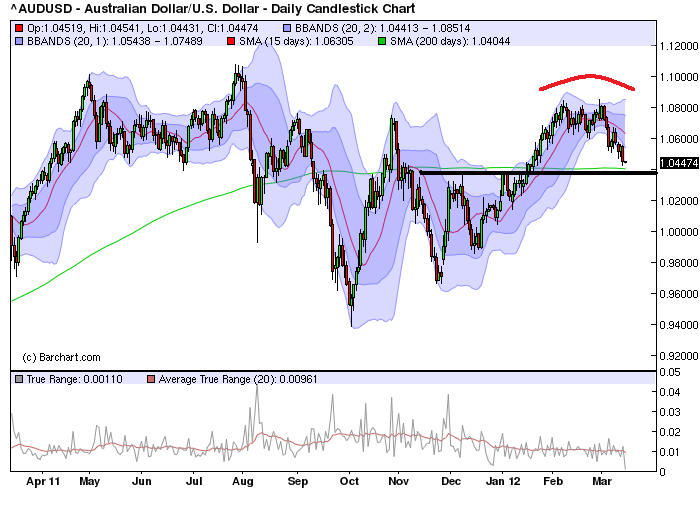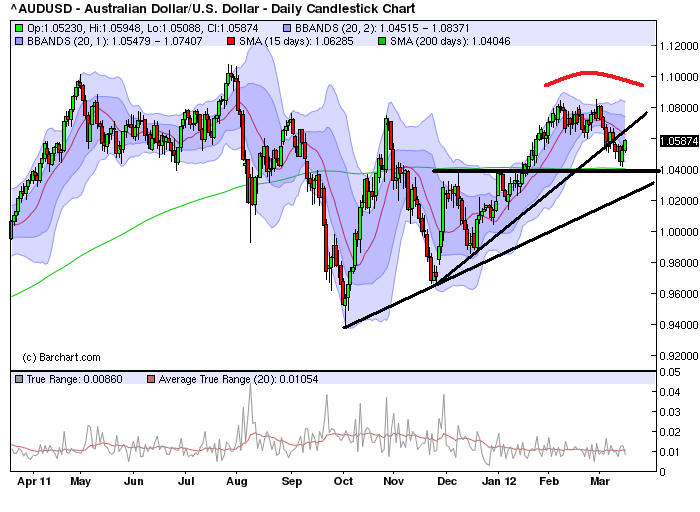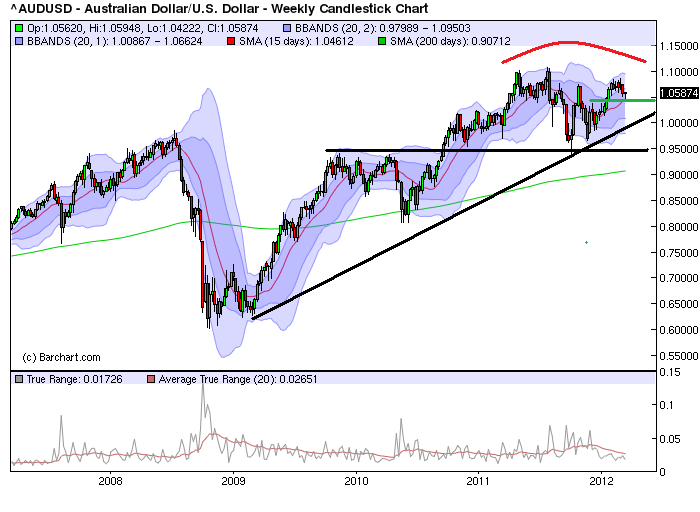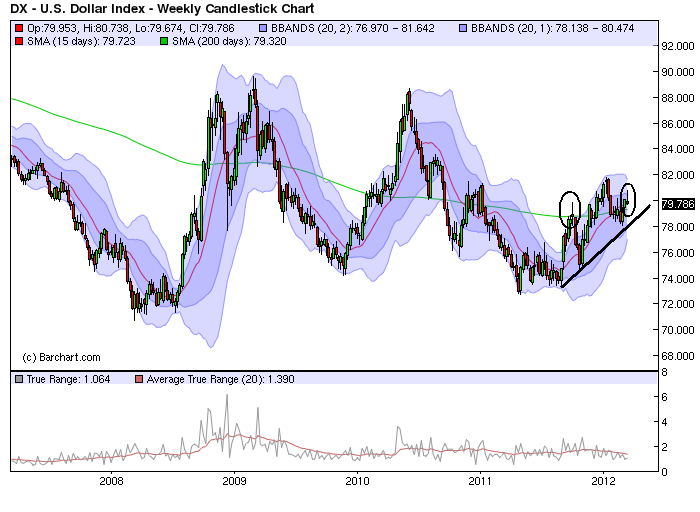It is undeniable that the Australian dollar has had a great bounce off the support we highlighted last week. While I thought the Australian dollar might have fallen into the 1.0378/1.0407 zone, it got close enough that over the past few days people are becoming bullish once again.
Lets first look at last weeks chart and then let’s look at the chart as it was on Sunday night.
Here is last week’s chart:

As I wrote, the Aussie looked like it was nearing very important support and though I thought, and think, that the tide might be turning for the Aussie, it has bounced impressively.
Here is the daily chart at the moment though:

You can clearly see the bounce away from important support but, equally, the Aussie has not broken back above the downtrends line it broke through a week or so ago. Also worth noting is that for the moment my double Bollinger band system is still short Australian dollars in favour of US dollars.
As it stood Sunday night, I will be stopped out for a small profit at 1.0628 should the Aussie rally up there on Monday. However, for the moment I am still short.
Looking at the longer term weekly chart you can see a very similar structure although over a very different time frame:

It’s striking how similar these charts look. I would have been stopped out of a long on a double Bollinger Band strategy had I been running this longer weekly time-frame system last week on the run to the 1.0424ish low. This suggests to me that the Australian dollar’s pullback may not yet be over.
What you can see here is that whereas the 1.0380/1.04 region on the dailies is crucial support for the recent rally, the 0.9500 region represents the same type of support on a weekly timeframe. It’s a long way away but something to bear in mind if the Aussie eventually starts trading down through parity anytime soon.
That is someway off yet and the 1.0380/1.04 remains the key so a move toward 0.95 is not even on the radar except as a really long term possibility, just like the 1.15ish if 1.1080 gives way to the topside.
Nearer to hand, last week we saw the S&P 500 look like it is breaking out but the US dollar reversed. We also saw US Treasuries sell off sharply.
It is a difficult market to trade at the moment. It feels like we might be in a transition phase from a currency perspective if the US economy can continue to outpoint other global economies. The better performance fom the S&P 500 and a widening of the spread in favour of US Treasuries against the Australian market and bonds should put downward pressure on the Aussie dollar and buoy the USD index.
But as you can see in the chart below the USD reversed course last week – I think inexplicably if we look at fundamental drivers:

As you can also see in the chart, last week’s price pattern is, in a Japanese Candle Stick sense, a bearish “shooting star”. I’ve circled it on the right but also the last time we saw the same pattern when the US dollar sold off over the next couple of weeks.
So where does that leave us?
Last week price action reinforced the importance of the support that we identified in the 1.0380/1.04 region so we look like we have a range market for the moment. 1.04 0n the bottom side and around 1.0850 on the top side.
Is the bounce sustainable? Absolutely while it remains above the support identified, but if that breaks it is another story. Until then, we respect it.
Have a great day
www.twitter.com/gregorymckenna
Please remember these are not recommendations for you to trade these are my views and I have my risk management tools and risk parameters that you do not have access to. Thus, this blog is for information only and does not constitute advice. Neither Greg McKenna nor Lighthouse Securities has taken your personal circumstances, objectives or financial situation into account. Because of this you should, before acting on this information, consider its appropriateness, having regard to your objectives, financial situation or needs.